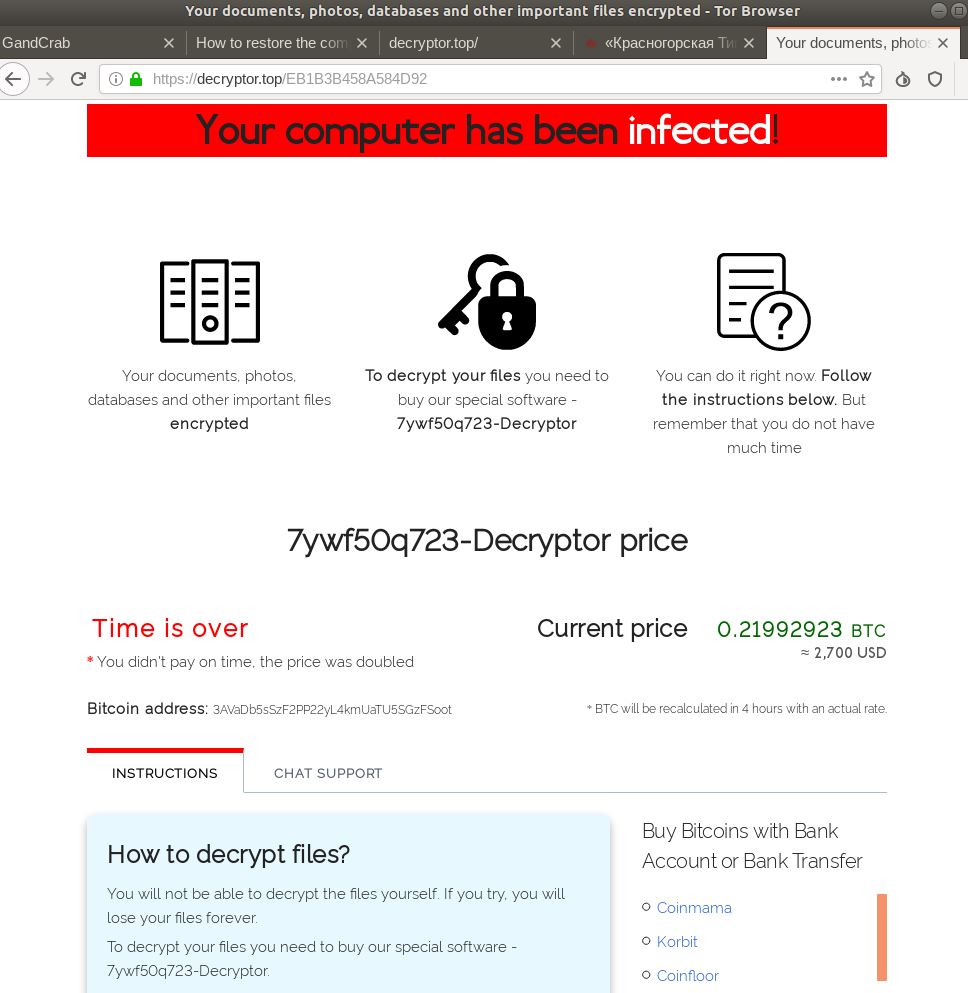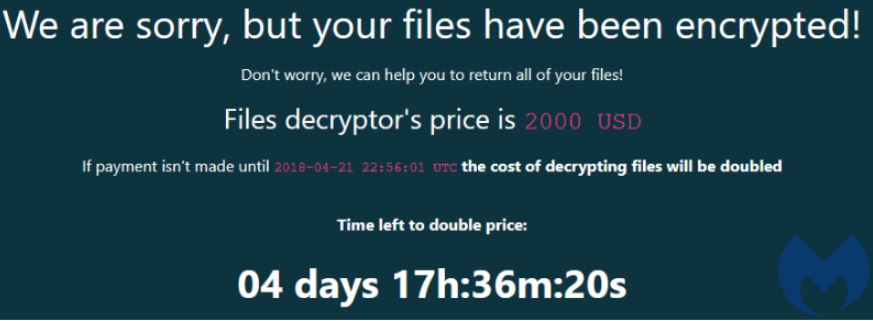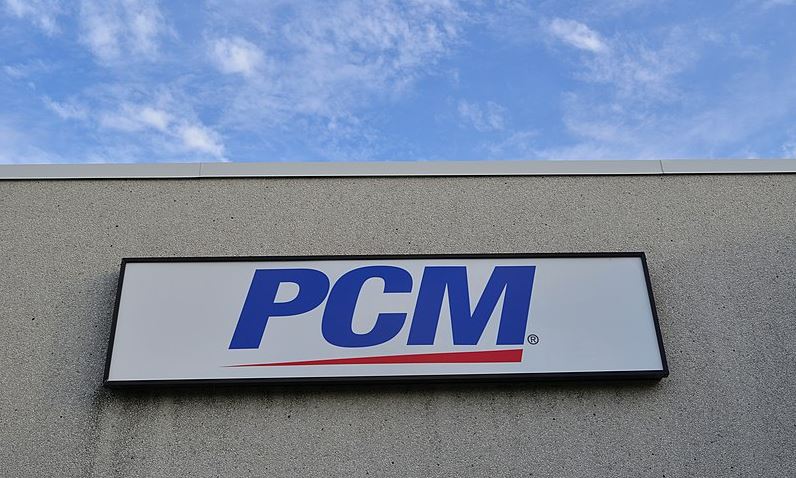The cybercriminals behind the GandCrab ransomware-as-a-service (RaaS) offering recently announced they were closing up shop and retiring after having allegedly earned more than $2 billion in extortion payments from victims. But a growing body of evidence suggests the GandCrab team have instead quietly regrouped behind a more exclusive and advanced ransomware program known variously as “REvil,” “Sodin,” and “Sodinokibi.”
“We are getting a well-deserved retirement,” the GandCrab administrator(s) wrote in their farewell message on May 31. “We are a living proof that you can do evil and get off scot-free.”
However, it now appears the GandCrab team had already begun preparations to re-brand under a far more private ransomware-as-a-service offering months before their official “retirement.”
In late April, researchers at Cisco Talos spotted a new ransomware strain dubbed Sodinokibi that was used to deploy GandCrab, which encrypts files on infected systems unless and until the victim pays the demanded sum. A month later, GandCrab would announce its closure.

A payment page for a victim of REvil, a.k.a. Sodin and Sodinokibi.
Meanwhile, in the first half of May an individual using the nickname “Unknown” began making deposits totaling more than USD $130,000 worth of virtual currencies on two top cybercrime forums. The down payments were meant to demonstrate the actor meant business in his offer to hire just a handful of affiliates to drive a new, as-yet unnamed ransomware-as-a-service offering.
“We are not going to hire as many people as possible,” Unknown told forum members in announcing the new RaaS program. “Five affiliates more can join the program and then we’ll go under the radar. Each affiliate is guaranteed USD 10,000. Your cut is 60 percent at the beginning and 70 percent after the first three payments are made. Five affiliates are guaranteed [USD] 50,000 in total. We have been working for several years, specifically five years in this field. We are interested in professionals.”
Asked by forum members to name the ransomware service, Unknown said it had been mentioned in media reports but that he wouldn’t be disclosing technical details of the program or its name for the time being. Continue reading





 Zero-days and publicly disclosed flaws aside for the moment, probably the single most severe vulnerability addressed in this month’s patch batch (at least for enterprises) once again resides in the component of Windows responsible for automatically assigning Internet addresses to host computers — a function called the “Windows DHCP server.”
Zero-days and publicly disclosed flaws aside for the moment, probably the single most severe vulnerability addressed in this month’s patch batch (at least for enterprises) once again resides in the component of Windows responsible for automatically assigning Internet addresses to host computers — a function called the “Windows DHCP server.”




 Just a few days ago, the news was all about how Quest had suffered a major breach. But today’s disclosure by LabCorp. suggests we are nowhere near done hearing about other companies with millions of consumers victimized because of this incident: The AMCA is a New York company with a storied history of aggressively collecting debt for a broad range of businesses, including medical labs and hospitals, direct marketers, telecom companies, and state and local traffic/toll agencies.
Just a few days ago, the news was all about how Quest had suffered a major breach. But today’s disclosure by LabCorp. suggests we are nowhere near done hearing about other companies with millions of consumers victimized because of this incident: The AMCA is a New York company with a storied history of aggressively collecting debt for a broad range of businesses, including medical labs and hospitals, direct marketers, telecom companies, and state and local traffic/toll agencies.